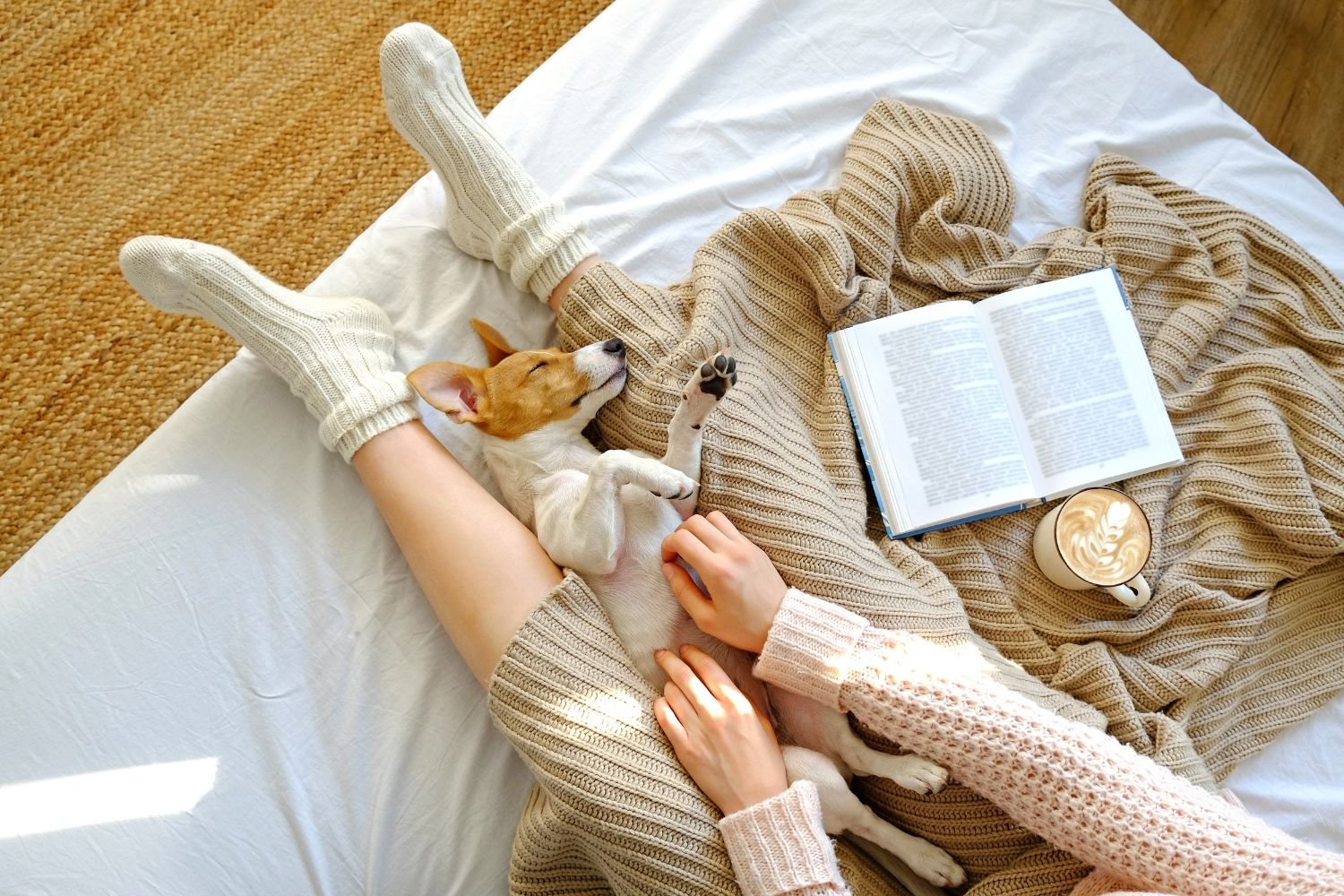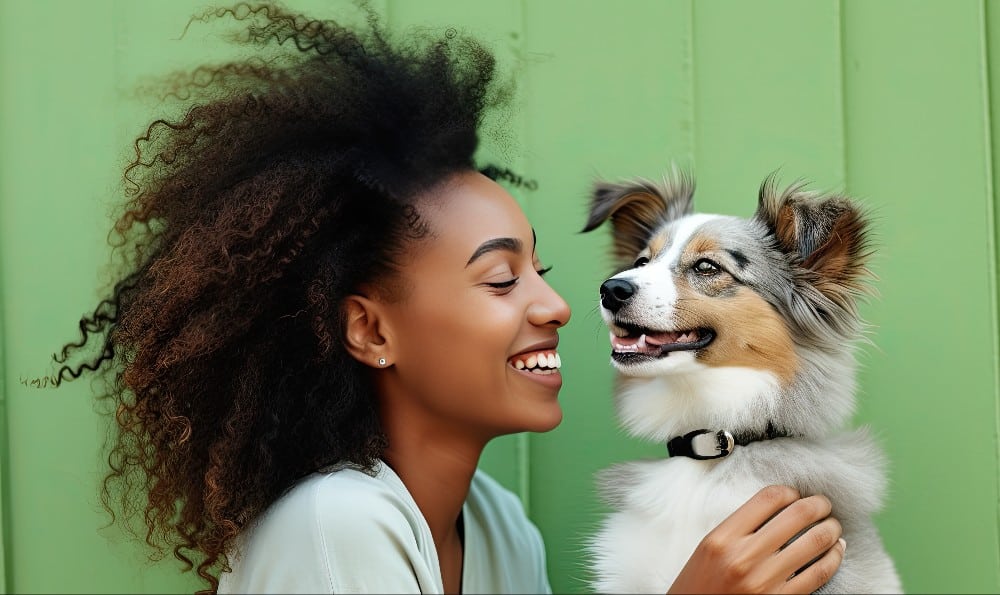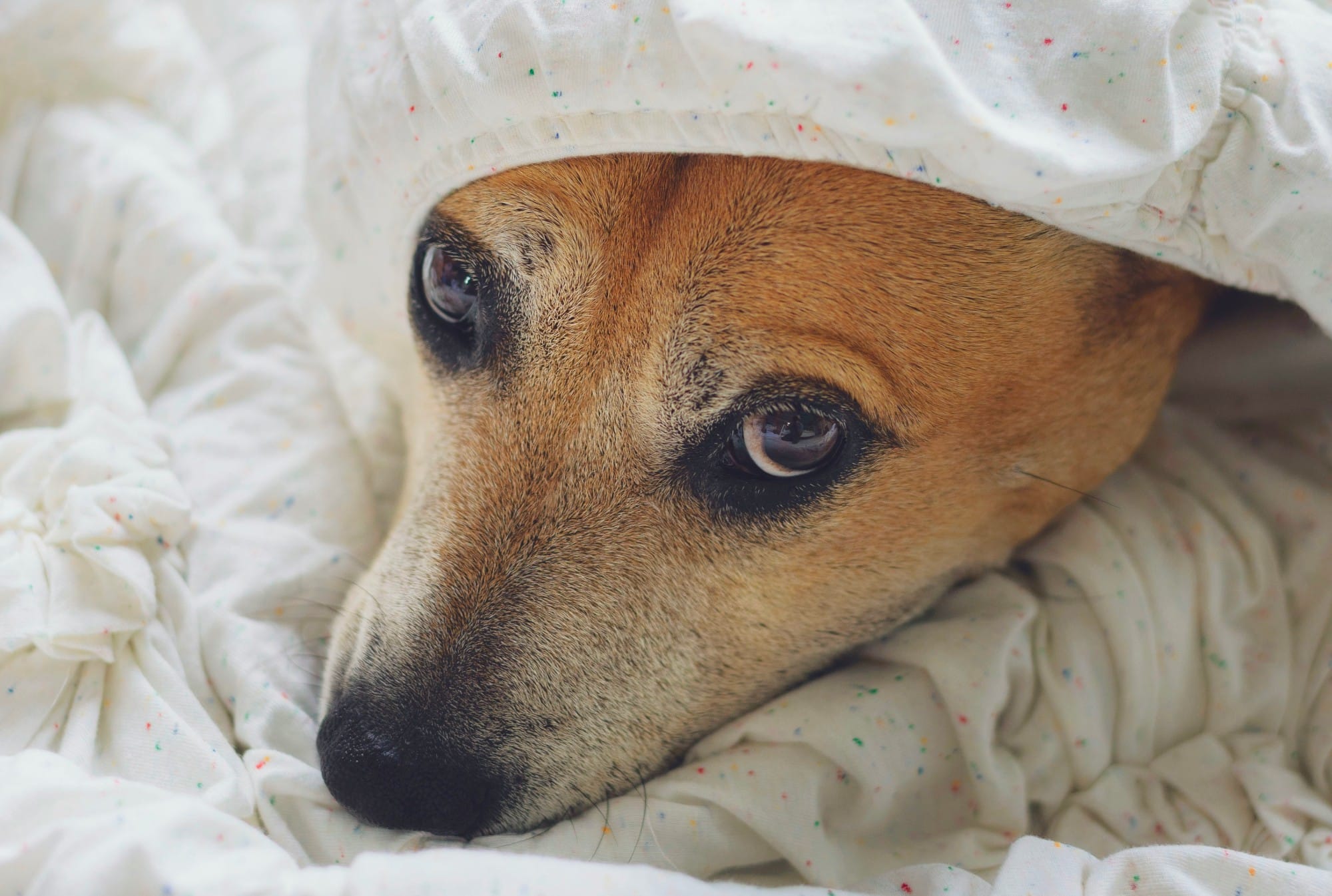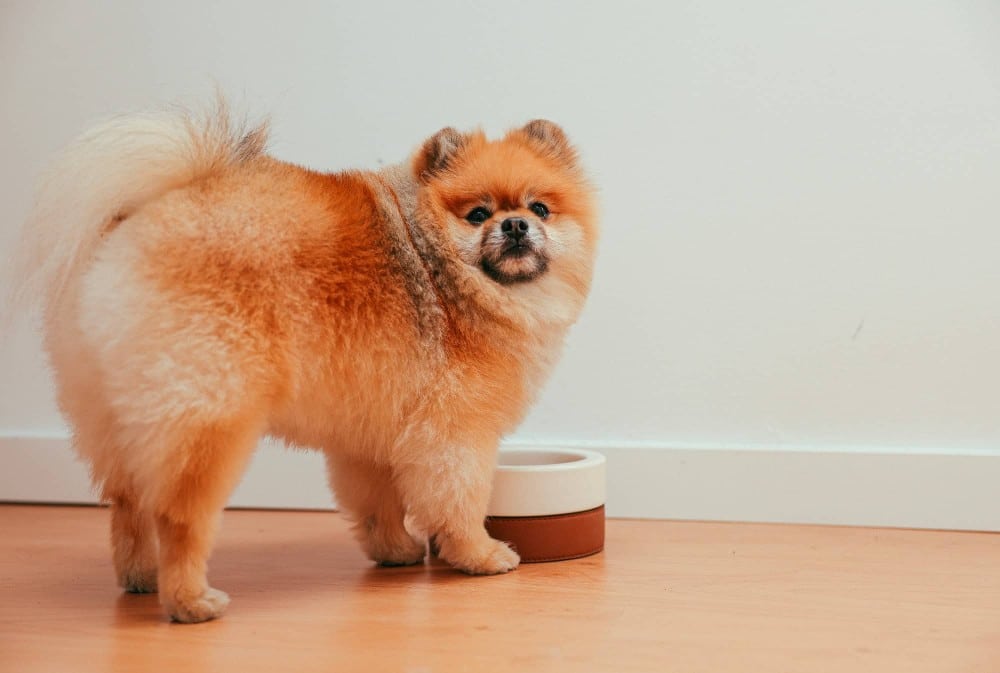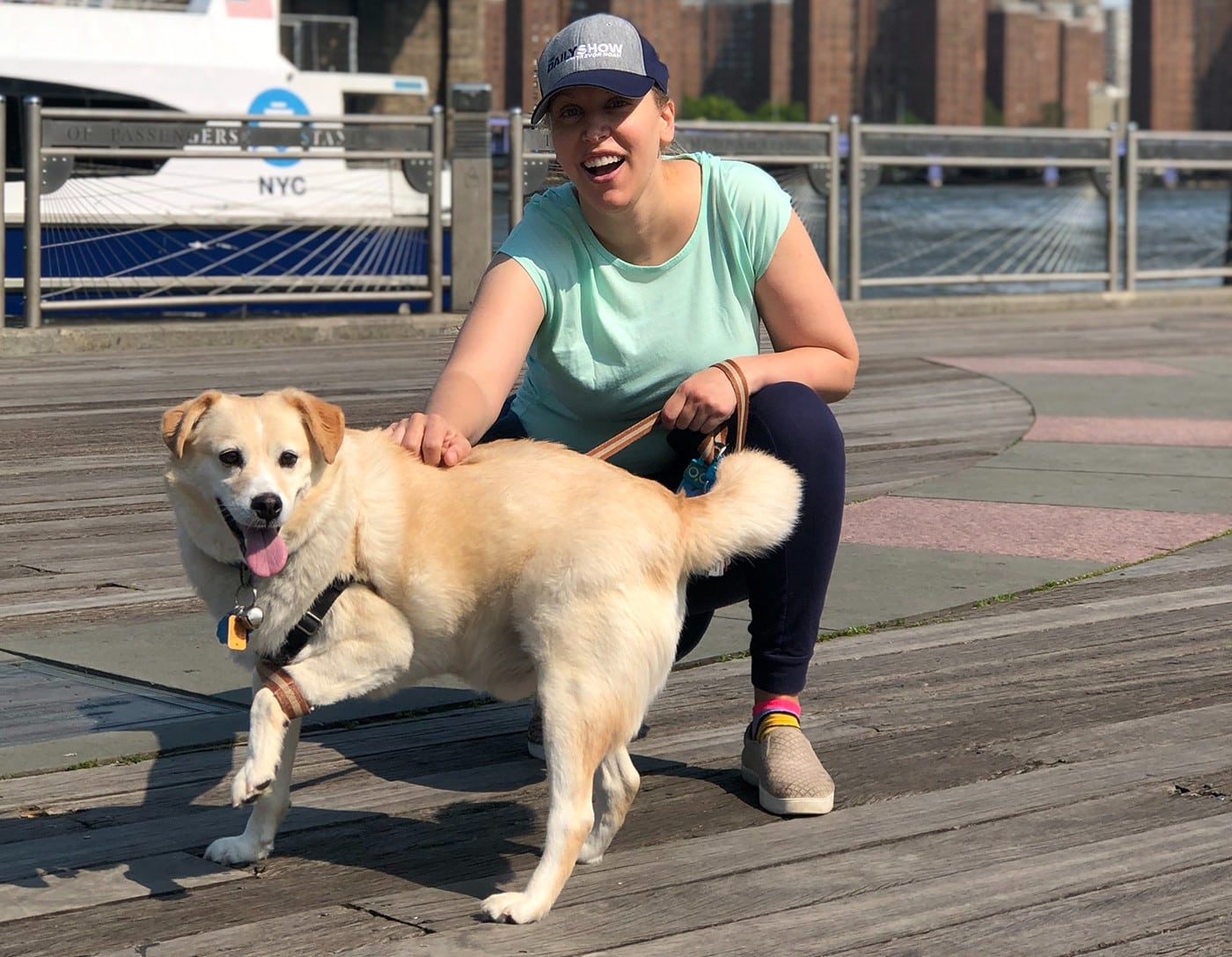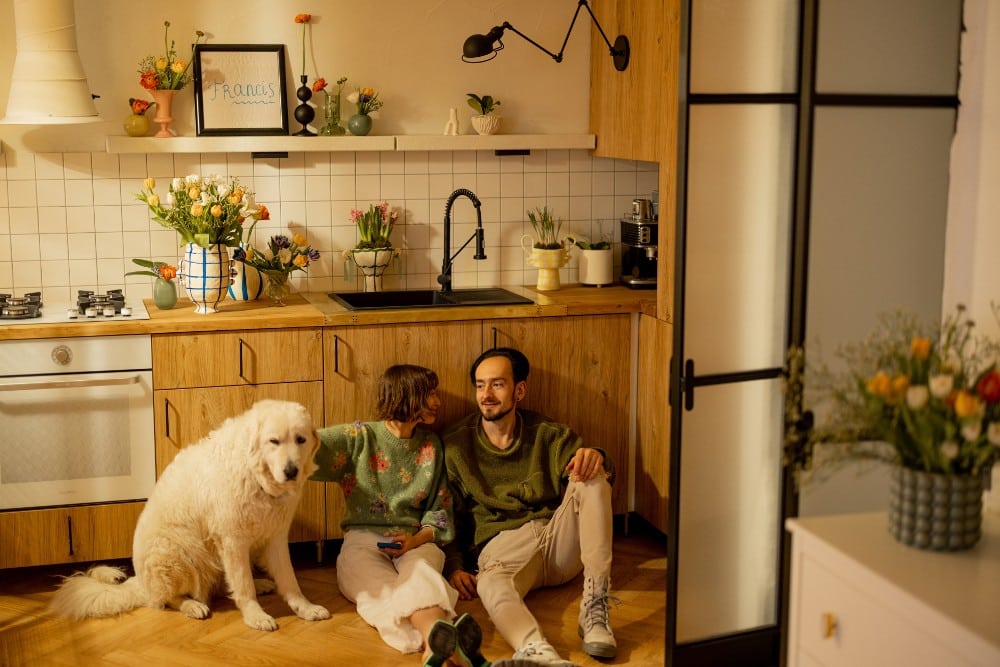Your heart pounds, your breath quickens, your hands shake, and you want to flee. Whether you’re about to walk up to a lectern, telling your crush how you feel, interviewing for a job, or sitting down to take a test, anxiety is one of the most uncomfortable emotions. Yet it’s an integral part of the human experience, and is often beneficial. A case of the jitters can keep us alert, warn us of danger, and spur us to perform better.
Unfortunately, anxiety is also a fairly common aspect of the canine experience, too. Dog anxiety is somewhat similar to the people version, albeit with a few key differences. Dogs cannot parse out the meaning of their panic or uneasiness; being unable to comprehend it cognitively may make its impact greater. They probably don’t notice their increased heart rate or shallow breathing the same way we do, and therefore can’t take deliberate steps such as breathing exercises or meditation. (And, conversely, us humans don’t usually bark or howl when we’re feeling distraught.)
Related: So Hard to Say Goodbye: Separation Anxiety in Dogs
Perhaps most importantly, dogs are not equipped with the same set of troubleshooting tools that us humans can use to calm their distress. It’s up to us, as responsible canine parents, to help our dogs through anxiety — both acute instances of fear or nervousness, and the stress that results from frequent or continuous emotional upheaval.
How Common Is Anxiety In Dogs?
It is very common for canines to be fretful or uneasy once in a while. In fact, a recent study from Finland found that over 70 percent of dogs expressed anxiety-related behavior. That doesn’t necessarily mean that every dog is quaking in his or her cute little boots all the time. Certain circumstances are almost sure to discomfit dogs. Nevertheless, this statistic serves as a reminder to keep an eye on your dog’s daily well-being. Early intervention can ease or even prevent a pet’s anxious state or actions.
What Causes Canine Anxiety?
Why do dogs even experience anxiety in the first place? Good question. After all, they sure seem to have it made in the shade since all they do is play, sleep, eat, hang out with their favorite people, and receive belly rubs.
Related: What Exactly is a Fear Free Vet Experience — and Why More Clinics Are Doing It
“Even though dogs are a different species, they still are emotional, sentient beings who experience a spectrum of feelings, just as humans do,” says Joan Hunter Maye, a certified professional dog trainer at The Inquisitive Canine.“Fear and anxiety should be taken seriously and attended to in a loving yet productive way.”
Like people, dogs thrive on routine. That means anything unfamiliar or unpredictable has the potential to trigger apprehension or panic.
Being abandoned can lead to anxiety; so can the presence of another dog, meeting a new human friend, spending time in a strange place, or a departure from the dog’s usual schedule.
Since it’s a response to fear, anxiety also occurs when dogs experience scary stuff — think: thunderstorms, fireworks, or loud, nearby noises such as the vacuum (mortal enemy of so many pets), an argument, or heavy machinery in operation. Dogs may become anxious when they know, or sense, that something negative is nigh: a car ride that culminates in a vet visit, for example, or a young child who wants to play dress-up with the doggy.
And then there is separation anxiety, which is a specific type of mood disorder that can be triggered by trauma (remember dogs have a very different threshold for trauma than people). Something as relatively minor as their humans’ post-pandemic return to work outside of the home can lead to separation anxiety. If your dog’s behavior changes for the worse every time you depart, check out the symptoms of separation anxiety to determine which type you’re dealing with and the best course of action to take.
Related: How to Prepare Your Dog Now to Prevent Separation Anxiety After Lockdown Ends













